A Private Tour today in North Norfolk. After 6 months (to the day!) since our last tour, with everything in between cancelled due to COVID restrictions, it was very nice to be able to get back out again. The plan was to try to pick up some lingering winter visitors, as well as try to find some early spring migrants. It was mostly bright, with sunny intervals, cool in the morning particularly in the northerly breeze but warming up nicely in the afternoon, and with just a brief shower at lunchtime.
We started the day at Snettisham. Stopping by the entrance to the car park, a Barn Owl was hunting over the grass down along the inner seawall, flying across the road in front of us and disappearing off into the Coastal Park. A pair of Goldcrests were flitting around in some conifers by the pavement, the male singing and fluffing out its bright gold and flame-coloured crown feathers.
The fields either side of the road here can be good for Ring Ouzels at this time of year, but all we could find this morning were a couple of unringed Ouzels (also known as Blackbirds!). There were lots of Curlews feeding out on the grass too. We set off to walk up to the gate into the Coastal Park and a Greenfinch was singing and doing its fluttering song-flight over the garden of the nearby cottage. The sweet, descending scale of a Willow Warbler drifted out from the bushes. We could hear the distinctive call of Mediterranean Gulls too.
As we got to the gate, a couple with a rather lively dog were just ahead of us, the dog running in and out of the bushes either side of the path, significantly reducing our chances of seeing anything. We diverted up onto the outer seawall, and looked out across the Wash. We received a message to say that an Osprey had been seen over Ken Hill Marshes, just behind us, but had flown south. So we scanned across that way and picked up a large bird or prey way off in the distance, hovering slowly. Even through the scopes, it was right at the limit, too far to make out any detail, but as it broke off from hovering and turned, we could see it was very long-winged, a distinctive flight silhouette – the Osprey, but not the best views of one we have ever had!
The tide was in. Some more dogwalkers down along the beach further up flushed several Ringed Plovers as they walked along. There were lots of birds out on the water, but rather than seaduck they turned out to be several rafts of Teal and Wigeon, along with a small party of Cormorants and, further out, lots of large gulls.
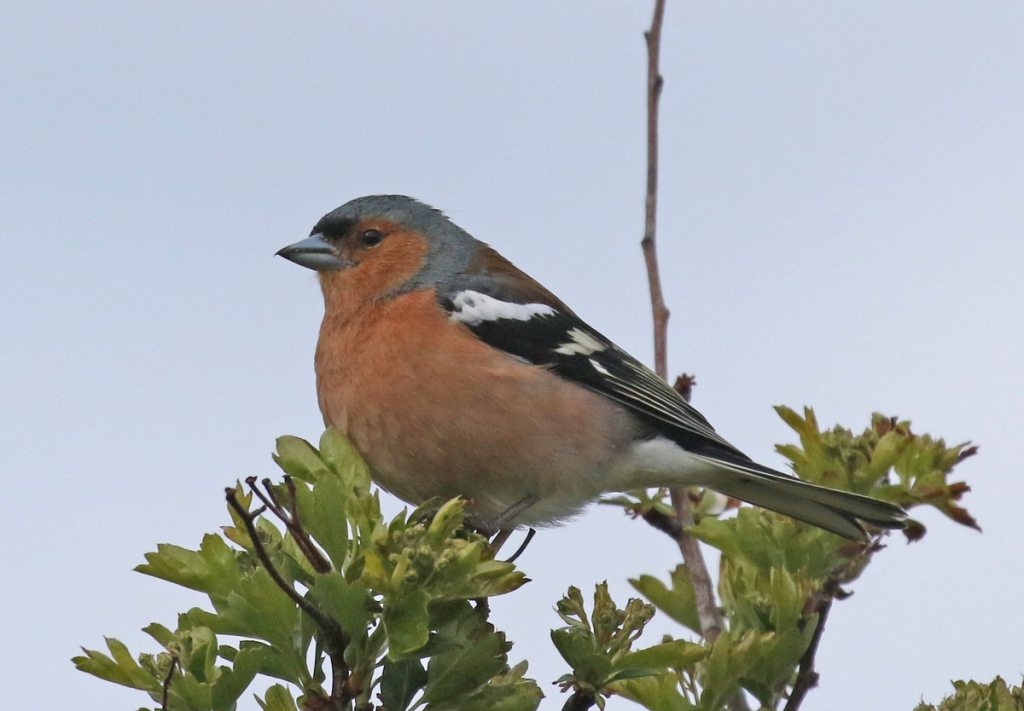
As we dropped back down off the seawall and onto the path through the Coastal Park, a couple of Sedge Warblers were singing, and we eventually found one perched half way up a small bush in the reeds. There were lots of Chiffchaffs and one or two Blackcaps singing too, the early returning summer breeding warblers, although number of returning birds have probably been held up by the cold northerly winds over the last couple of weeks. A very smart male Chaffinch perched up on the top of a Hawthorn as we passed and there were lots of Linnets all the way up. We came across the Barn Owl again, hunting over the grassy area in the middle of the Coastal Park.
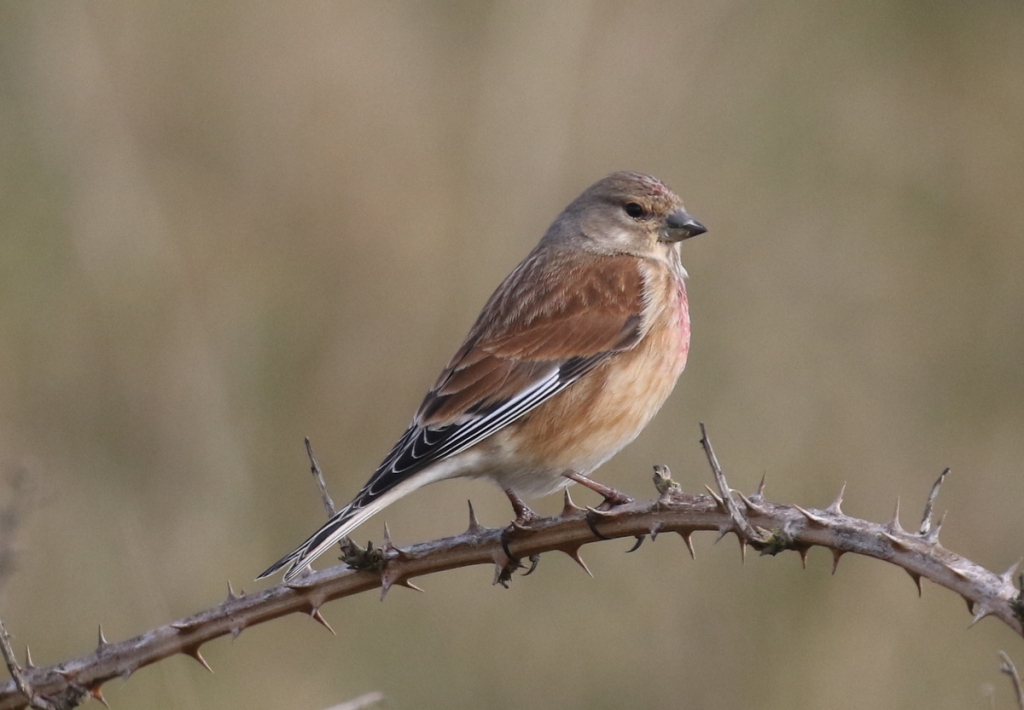
There was a distinct lack of migrants moving overhead today, again a consequence of the northerly winds, but as we got up towards the crossbank, we heard a Yellow Wagtail calling and picked it up high in the sky approaching from the south. The first couple of calls sounded pretty conventional, but the next two or three had a distinctly rasping quality to them. Yellow Wagtails come in lots of different forms, and it would have been interesting to see this one on the ground, but unfortunately we watched as it flew off north into the distance.
Walking across to the inner seawall, we climbed up to the top and scanned the grass to the north of the crossbank. There were no cows out, which explained why the wagtail didn’t stop. The Barn Owl was out hunting here now. There were lots of Meadow Pipits and a couple of Skylarks, along with a pair of Grey Partridge. Two smaller, slimmer, shorter-billed birds in with a small group of Curlew were confirmed as two Whimbrel through the scope. They were a bit distant, but turning our attention across to Ken Hill Marshes the other side, we realised there was another Whimbrel on the grass just beyond the ditch. We had a really good view of the striped crown on this one.
There were lots of Avocets, Redshanks and Lapwings on the new pools. Scanning carefully, we found several Common Snipe around the vegetated islands too. There was a nice selection of wildfowl, lots of ducks including a single pair of Pintail. In with the commoner geese, we found a single Pink-footed Goose, its smaller size, dark head and more delicate and mostly dark bill distinguishing it from the nearby Greylags. Most of the Pink-footed Geese which spent the winter here have long since left, although a few are still lingering, some having been shot and winged and unable to make the journey back to Iceland. Our first Marsh Harrier of the day was hunting out over the water.
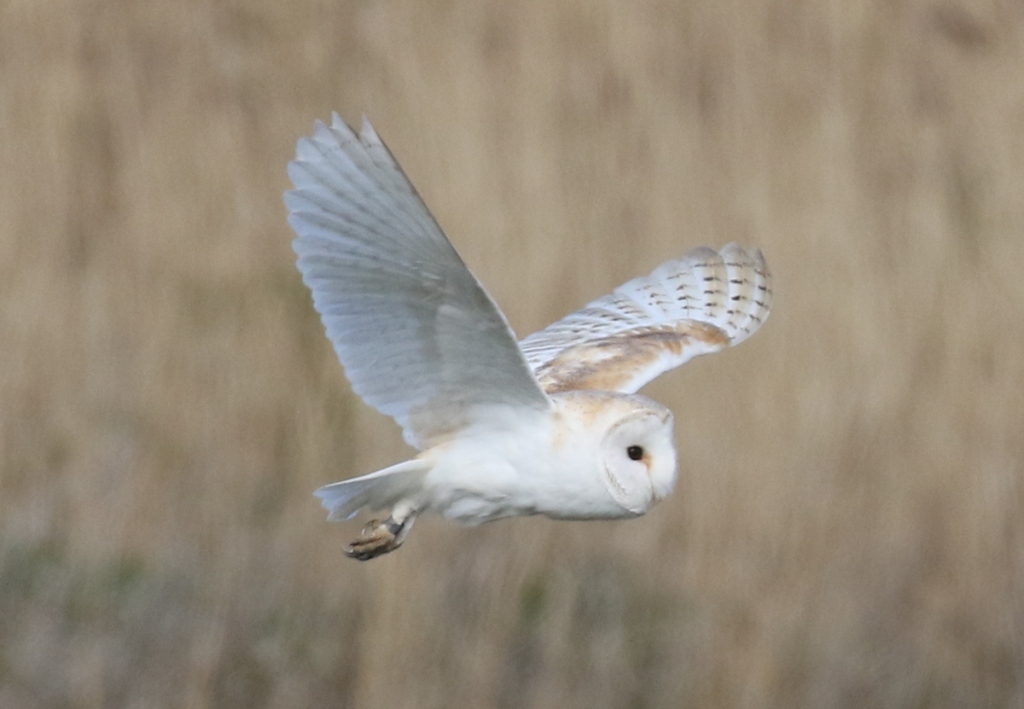
The Barn Owl seemed to be following us! It flew back south over the crossbank as we turned to head back along the inner seawall. Most of the way, it kept flying off ahead of us, before coming back again. Great to watch, but it must have been hungry to be out mid-morning, and we didn’t see it catch anything all the time it was in view. A single Swallow and a Sand Martin flew past, surprisingly the only hirundines we saw here this morning. Back to the minibus, another Grey Partridge was out with the Curlew now and a Sparrowhawk came in low from the direction of the marshes. There was still no sign of any Ring Ouzels in the paddocks though.
One request for this morning was to try to see some waders, and there is no better place than Snettisham for that! The tide was already going out fast by the time we got down to the pits and up on the seawall by the Wash. Looking out across the mud, we could see thousands of birds out here still, loads of Knot, Dunlin, Ringed Plover, Redshank and Oystercatcher. A Grey Plover moulting into breeding plumage looked very smart with its black face and white-spangled upperparts. There were lots of Black-tailed Godwits feeding in the mouth of the channel, most already in their orange summer attire, feeding up before heading off to Iceland to breed. A similarly dressed Bar-tailed Godwit further up on the water’s edge was noticeably different, with the rusty colour extending right down under the tail.
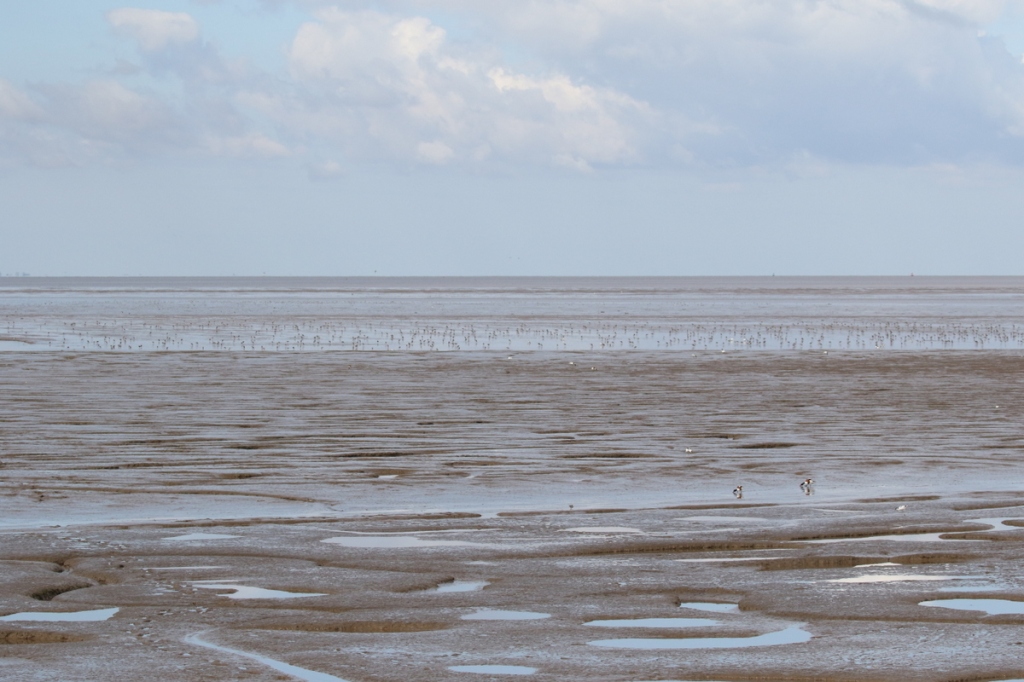
Unlike many of the other waders, the Avocets don’t spend the winter here but there are already lots back. There was a liberal scattering across the mud all the way down to the hides. We just wanted to have a quick look at the southern pit today, which has been taken over by hundreds of breeding gulls. Scanning from the causeway, in amongst the more numerous Black-headed Gulls we found a few Mediterranean Gulls, with their more extensive jet black hoods and white wing tips, and a single Common Gull too.
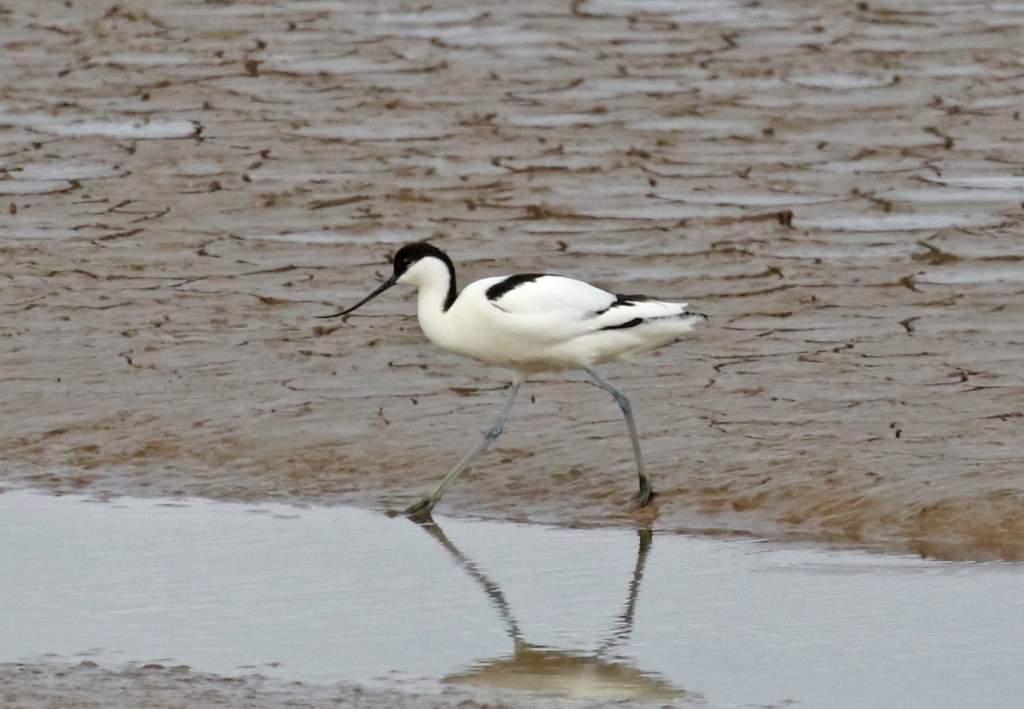
We had lots we wanted to try to pack in today, so we moved on. A brief check of some paddocks at Hunstanton, where there had been Ring Ouzels a few days ago, failed to produce any here either. Rounding the corner of the coast, we drove into some dark clouds and a sharp shower. It had already stopped by the time we got to Holme, but it was now rather cool and cloudy and a couple of brief stops listening for Grasshopper Warblers drew a blank. We did manage to get a hot drink down at The Firs and stopped to eat our lunch. A young Peregrine flew through quickly towards Thornham before circling back more slowly a little later and five more lingering Pink-footed Geese were out on the grazing marshes.
Our next stop was at Titchwell. We wouldn’t have long here today, but we wanted to have a quick look at the Freshmarsh at least, so we headed straight out. As we got out of the trees on the main path, a Red Kite drifted out across the reedbed and another was hunting out over the dunes. A few Pied Wagtails were feeding out on the former pool on Thornham grazing marsh. The reedbed pool produced a few Tufted Ducks and Common Pochard, but a Little Grebe remained hidden in the reeds and we could only hear it laughing at us. There were still quite a few Brent Geese here, commuting between the Freshmarsh and the saltmarsh the other side of the west bank. In the next month or so, they will be off back up to Russia to breed.
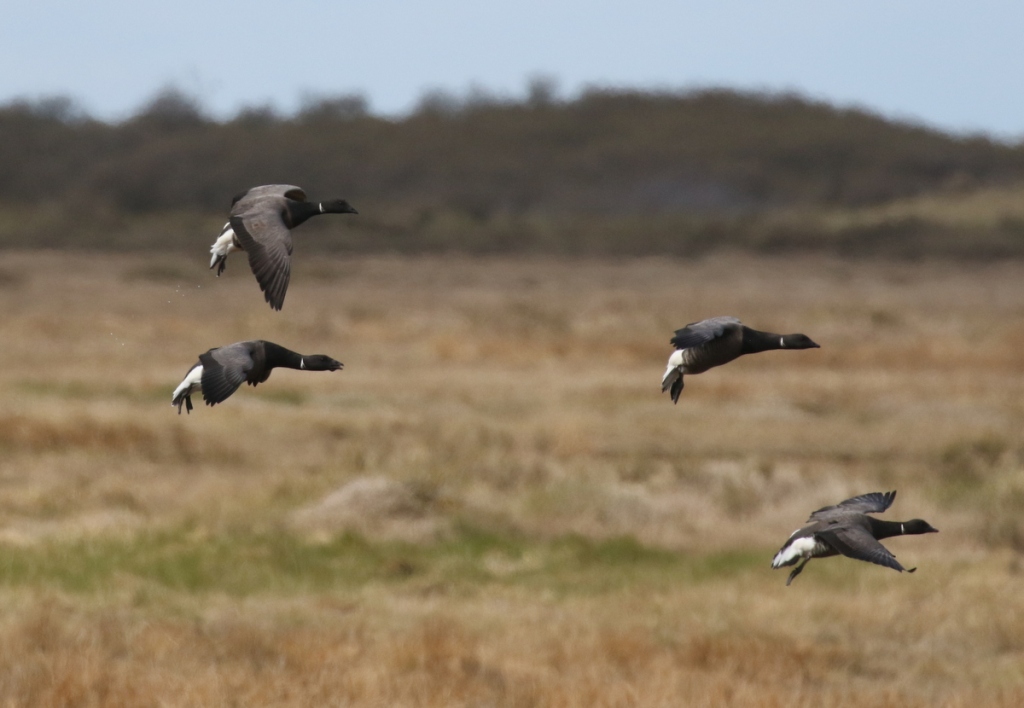
We stopped on the bank by one of the benches to scan the Freshmarsh. Apart from several Avocets, there were no many waders on here. The water level is still quite high, and there is not much exposed mud. On the small area which has appeared in front of Parrinder Hide, we could see two Little Ringed Plovers which have returned already for the breeding season. With the hides closed, they were not particularly close but we could see their golden yellow eye-rings through the scopes.
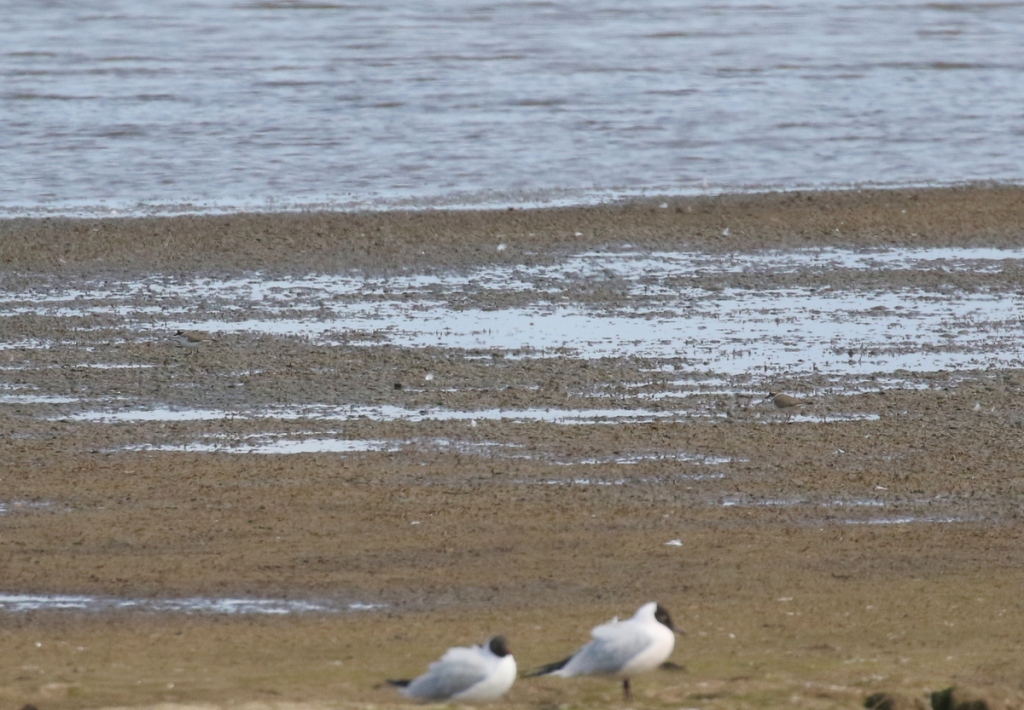
The large, fenced off island has been taken over by gulls again, with several pairs of Mediterranean Gull in among the Black-headed Gulls. We were hoping to find some Sandwich Terns on the Freshmarsh, but there weren’t any now – there had been earlier, but presumably they had gone out to the sea. Some very smart Teal were feeding just below us, on the near edge of the water. A couple of the drakes were squabbling and the more aggressive displayed too, squashing itself up before throwing its head back. Sometimes, one or two may stay all summer but most will be moving on soon.
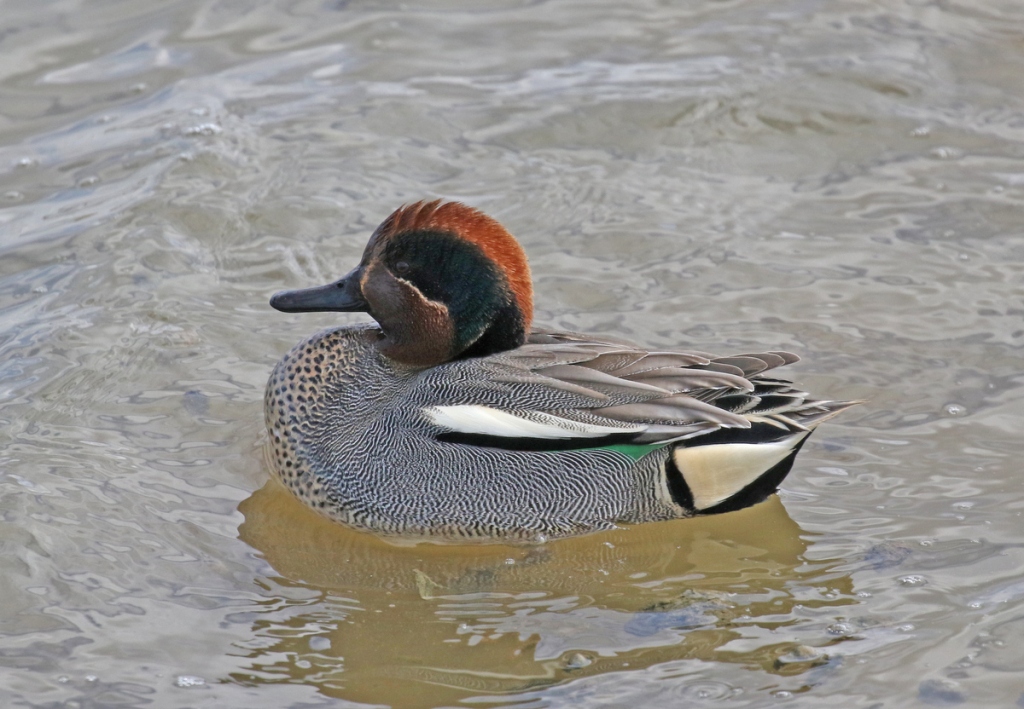
A small falcon came in high over the Freshmarsh now, grey-brown and compact, a Merlin. It carried on across Volunteer Marsh and when it got out to the dunes it turned and disappeared off to the east. Another lingering winter visitor here. We decided to make a quick dash out to the beach to see if we could find a Sandwich Tern out there. A single Redshank was hiding in the channel at the front of Volunteer Marsh and there were a few Curlew in the wide channel at the far end. We couldn’t see anything of note on the Tidal Pool today.
The sea was quiet. After a couple of minutes scanning with the scopes, we did manage to pick up a Sandwich Tern flying past – mission accomplished! A single Great Crested Grebe still out on the sea was a nice bonus. Most of the waders were further up along the beach towards Thornham Point, and despite the shimmer we managed to pick out a few Sanderling in the haze. A couple of Turnstone flew in and landed on the mussel beds, along with a flock of Knot.
With time getting on now and a few more things to try to squeeze in to the itinerary this afternoon, we decided to head straight back. As we walked back past the reedbed, we could hear a Bittern booming out in the reeds.
Continuing on east along the coast road, we stopped past Burnham Overy at the top of Whincover. There had been four Ring Ouzels seen from the track earlier this morning, so we thought we would try our luck as we were passing. With no further reports since, it was probably no surprise we couldn’t find them where they had been and another lone Pink-footed Goose and a Little Grebe were the best we could find out on the grazing marshes.
We were just about to give up and head back when we received a message to say that three had been seen again somewhere nearby, although the location given didn’t make sense. We had an idea where they might mean and thankfully we guessed right – we were almost down the seawall towards Burnham Overy Staithe when a revised message come through with the right directions.
Scanning the field, we thought for a few minutes like our luck might be out again. We could see a couple of Blackbirds, two Mistle Thrushes and a Song Thrush, but no sign of any Ring Ouzels. They do have a habit of disappearing into cover when they are disturbed though, so we carried on down the seawall and kept looking. Thankfully it didn’t take too long until a smart male Ring Ouzel appeared on a fence post on the edge of the field. It dropped down onto the grass and started feeding, and through the scopes we had a good view of its bright white gorget and silvery-edged wings.
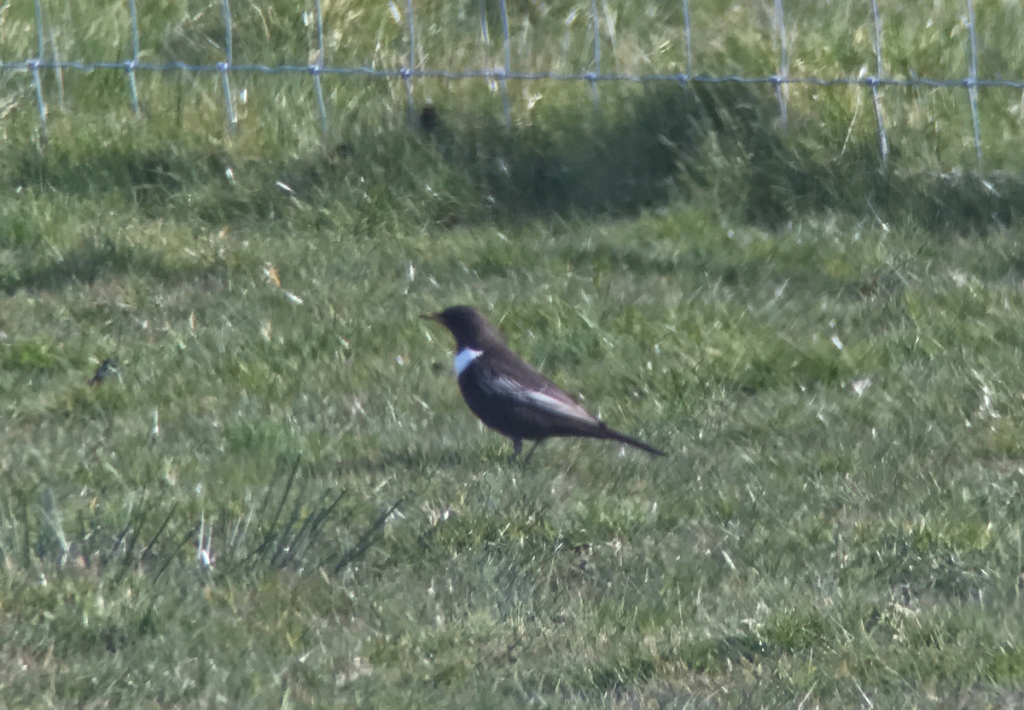
With another target in the bag, we set off back along the seawall towards Whincover. A Great White Egret was flying away from us across the grazing marshes – we could see that its bill was dark, rather than yellow, as the colour changes in the breeding season which can be a pitfall for the unwary. Back along the track across the grazing marshes, a Sedge Warbler was singing away in full view now in one of the briar clumps.
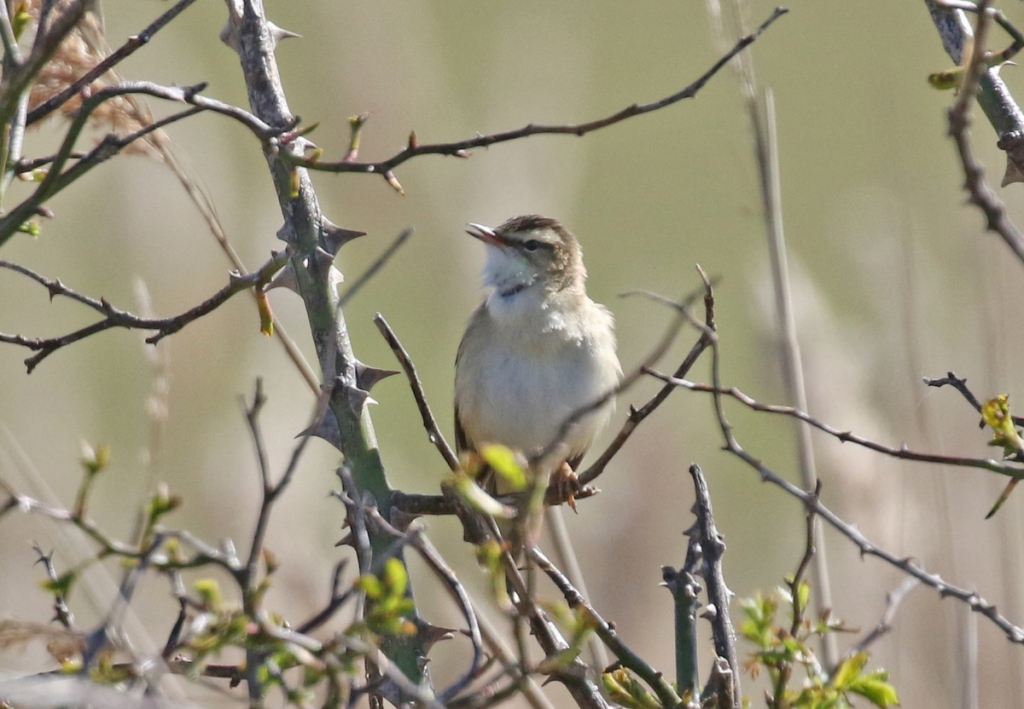
Our last destination for the afternoon was going to be back at Wells, but on the way there we made a very brief stop. We had surprisingly failed to come across any Spoonbills on our travels so far, but now we could see several distantly in the trees and flying in and out. As it was, we needn’t have worried.
There was meant to be a Grey Phalarope on the pools at Wells, which we were hoping to see to end the day. It had apparently flown off at dawn but had thankfully reappeared after a couple of hours. We knew it was favouring the far side of the pool east of the track, right in the far corner and only visible from further down, but as we walked down the track towards there we met a couple looking through their scope the wrong way. They told us that the phalarope had apparently flown off again, across the pool west of the track, just a few minutes before we arrived. Our hearts sank – we were just too late! We stopped anyway and lifted our binoculars and the first thing we saw was the Grey Phalarope flying straight towards us! It came right over our heads, and then flew back to its favoured spot over in the far corner.
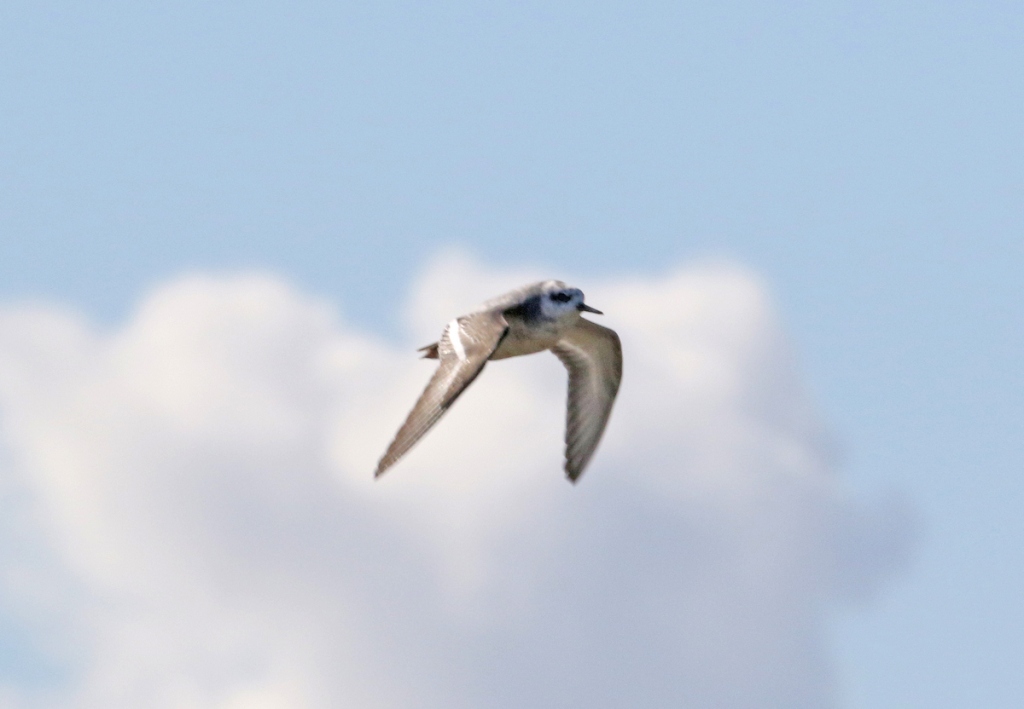
A large white shape over at the back of the pool to the east was another Spoonbill. Before we could get to the corner, it took off and flew straight towards us, passing over the track just behind us. A much better view than the ones we had seen on our brief stop on the way here.
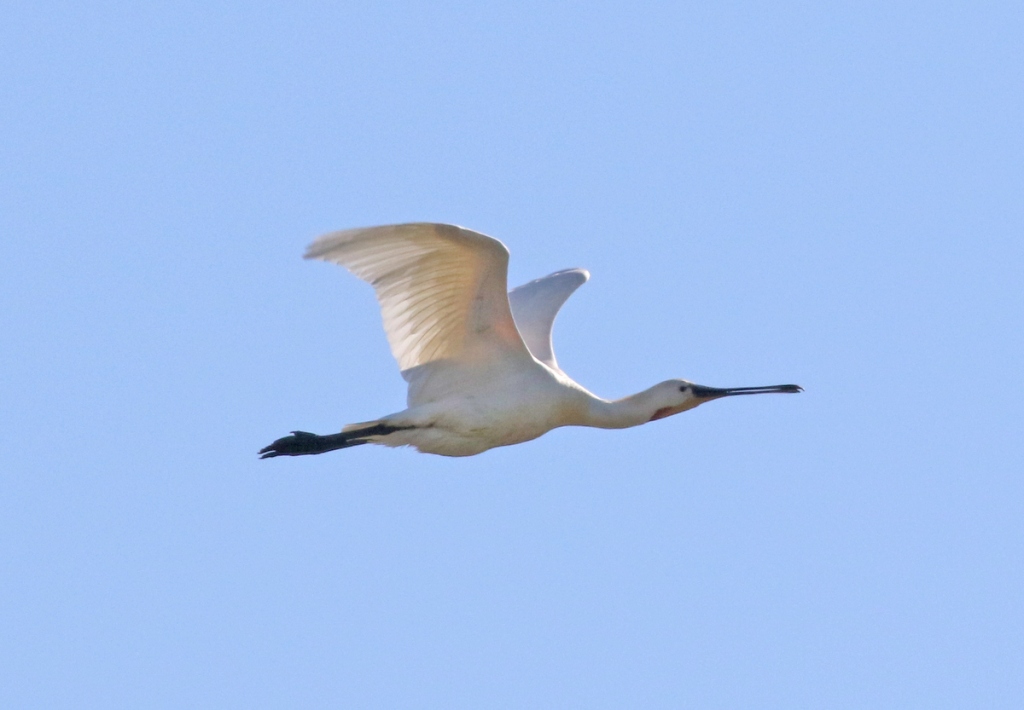
From the edge of the track at the far side of the pools, we set up our scopes again and looked back into the far corner. Sure enough, the Grey Phalarope was back in its favourite spot in the south-east corner of the eastern pool. It was swimming round in between several Avocets which were busily upending in the deep water, presumably stirring up the mud at the bottom and bringing food up for the phalarope to pick up.
It was a nice way to end the day, and it was now time to head for home. Despite the cool northerlies, we had succeeded in seeing a very selection of spring migrants, as well as picking up a good number of lingering winter visitors. It was great to be out again – hopefully we can now slowly get back to normal and resume a full programme of tours as planned in the coming months.
If you would like to come out birding in Norfolk, we are ready to go!
















